Argentina’s economy will recover some of its lost ground in the coming year – but the path ahead will be uphill battle, experts say. Slow and steady will be the name of the game.
The task ahead for the Mauricio Macri administration looks daunting at first glance. Last year, 2018, ended with the highest projected inflation index since 1991, a drop of more than two percent of the gross domestic product (GDP) and a steep decline in consumption due to the loss of purchasingpower. Nevertheless, expectations among analysts are that the economy will slightly recover in 2019, especially in the second half of the year.
Competitiveness is likely to improve in two main sectors: agriculture and energy, most experts agree.
“The economy should hit rock bottom on the first quarter of the year and then start to recover from the second quarter onwards, mainly because of the agricultural sector,” said Rodrigo Álvarez, head of the Analytica consultancy firm. “It will be a very slow recovery and many people might not even feel it.”
Alongside inflation, the exchange rate will be the key variable of the economy in 2019. After the more than 100 percent devaluation of the peso, the national currency has now accumulated three months of stability against the dollar, below the peak 42-pes o s - t o - g r e e n b a c k r a t i o reached in September.
The currency bands scheme will continue at least until the first quarter of the year but adjusting at a lower pace of two percent per month. That means the maximum rate would be 51 pesos to the dollar by the end of March.
The Mauricio Macri administration hopes to control the exchange rate through tight Central Bank monetary policy and a new disbursement of funds from the International Monetary Fund (IMF). However, 2019 is an election year and that piles on extra pressure, adding to growing doubts over the government’s funding capacity after 2020.
“The exchange rate should be calm in the first quarter of the year, depending on th country risk. The demand for US dollars is declining due to the recession,” Sebastián Martínez, a macro-economic analyst at the Abeceb consultancy firm told the Times. “But after that there’s a more uncertain scenario due to the elections and the economy.”
Meanwhile, the inflation spike should decelerate, though it will likely remain among one of the highest rates in the world. The government estimates it will drop to 23 percent in 2019, though economists forecast higher at 27.8 percent, according to a recent survey published by the Central Bank.
Any decline in inflation will be slow, though. Following recent peaks witnessed in September (6.5 percent) and October (5.4 percent,) economists agree that core inflation won’t drop below two percent per month until May.
“If the Central Bank monetary policy is successful, the inflation rate will gradually drop. If not, the government will face a harsh reality,” said Fausto Spotorno, economist and director of the Economic Studies Centre at the Orlando Ferreres consultancy firm.
STAGNANT EMPLOYMENT OULOOK
The labour scenario slowly but constantly downgraded in 2018, due to the steep devaluation, the consequences of which will continue to be seen in 2019. Stagnation is expected in almost all sectors, with agriculture and fisheries the only exceptions.
A report by the Manpower consultancy firm, based on surveys completed by 802 companies, concluded that the hiring expectations for the first quarter of the year are the worst in the last 12 years. Nonetheless, 77 percent of those surveyed said they aren’t expecting to either hire or lay off any worker.
“The two components of domestic demand, consumption and investment, don’t show encouraging perspectives for 2019,” said the Ecolatina consultancy agency in a recent report. “Wages will continue losing purchasing-power at least until the first half of the year, leading to consumption not picking up until the second quarter.”
Economists estimate that salaries will end 2019 with a slow growth in purchasingpower between two and four percent. That could help boost consumption, following the steep decline registered in most areas in 2018.
Digging into the details, 2018 ended as the third year in a row with a decline in sales of food staples, registering in November and December drops of more than five percent overall. At the same time, durable goods have also been affected, with drops of more than 50 percent in sales of cars and motorcycles seen in December.
“The biggest losers of the economic drop are those in the domestic market. Consumption declines and the cost of production and funding rise, especially of small and medium-sized companies. We hadn’t seen such drops in employment for a long time,” said Martínez.
Reductions in public-sector expenditure won’t help here either. The 2019 budget aims to achieve fiscal balance and public works will be the most affected, with a reduction of about 30 percent. Even publicprivate-partnership schemes aren’t expected to pick up due to the recent ‘notebooks’ (cuadernos) corruption scandal.
AGRICULTURAL RECOVERY
With good weather, agricultural production is expected to strongly recover in the 2019 harvest, following the drought which affected production in 2019. A record harvest of 126 million tons is expected, according to the Rosario Grain Exchange, with visible economic effects starting in the second quarter.
Such a significant harvest could mean an extra US$8 billion compared to 2018 and more foreign currency entering into the economy. The positive news for the agricultural sector could also have spin-off effects on grain transportation and on business in the inland towns and cities linked to the sector.
At the same time, the energy sector is expected to continue expanding in 2019, linked to the exploitation of hydrocarbons in the Vaca Muerta shale area, the growth of renewable energy and the expansion of mining – mainly lithium in the north of Argentina.
The reality of those sectors contrasts with the industry geared to the domestic market, with investment decisions by companies as well as individual purchasing decisions of consumer durables on hold.
The industry accumulates six months of decline, with the main drops registered in the textile, plastics and metallurgical sectors, according to the INDEC national statistics bureau. Between January and October of 2018, INDEC reported a drop of 12.9 percent in imports of capital goods.
“The higher competitiveness and the perspective of a larger harvest will improve export perspectives. Nevertheless, as the improvement of competitiveness proceeds alongside an increase on the cost of funding and higher uncertainties, the industry will take time to react,” reported Ecolatina recently.
For Álvarez, export sectors dependent on international prices will be favoured such as tourism, agriculture and energy. But “the positive elements aren’t enough to compensate for the decline in the domestic sector as Argentina exports too little in relation to its GDP,” he added.
The government expects the arrival of foreign tourists to grow eight percent in 2019, driven by the exchange rate. That would be 7.5 million people visiting Argentina with foreign exchange income set to grow by 5.5 percent.
NEW LEADERSHIP
Help could come from over the border too. Argentina’s main trading partner, Brazil, will enter a new phase in 2019, with the far-right Jair Bolsonaro taking office as the new president. His new economy ‘super-minister,’ famed ‘Chicago boy’ Paulo Guedes looks to have been given free rein to reshape the nation’s economy.
Internationally, expectations are high. According to the IMF, Brazil will grow 2.9 percent in 2019, which is good news for Argentina.
Brazil’s growth and a strong real could boost the demand for Argentine exports, mainly commodities, food and vehicles. That could help to improve the trade deficit of 2018, which would be close to US$2 billion, according to Abeceb.
“What happens with Brazil and its economic activity will be key for Argentina. Argentina has the pro-tempore presidency of Mercosur and that could help to have closer ties with Bolsonaro,” Martínez said. “The most important thing is for Brazil to grow in 2019.”
In the meantime, Argentina will face its own presidential elections and the effects are already visible, even with 10 months to go before the first round. The increase in country risk – which as of last week sat on 832 basic points, the highest since Macri took office – illustrates the uncertainty in the market over the future of Argentina after 2020.
As the elections draw closer, economists believe that the electoral uncertainty could lead to more exchange rate volatility, as happened before the PASO primaries in 2017 when the exchange rate reached 17.99 pesos to the dollar.
“The risks of Argentina after 2020 won’t go away if Macri wins again. At the same time, Cristina [Fernández de Kirchner] won’t be able to do whatever she wants if she is elected. The country has a heavy burden to carry due to the indebtedness and Macri’s failure to achieve sustainable growth,” Álvarez said.












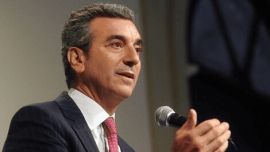



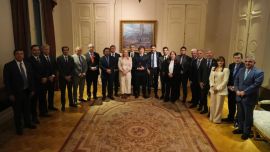


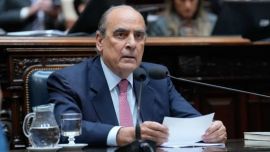
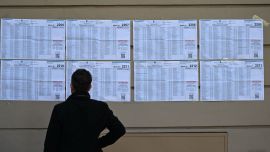
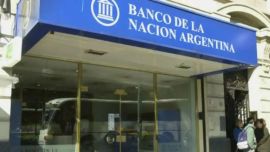




Comments